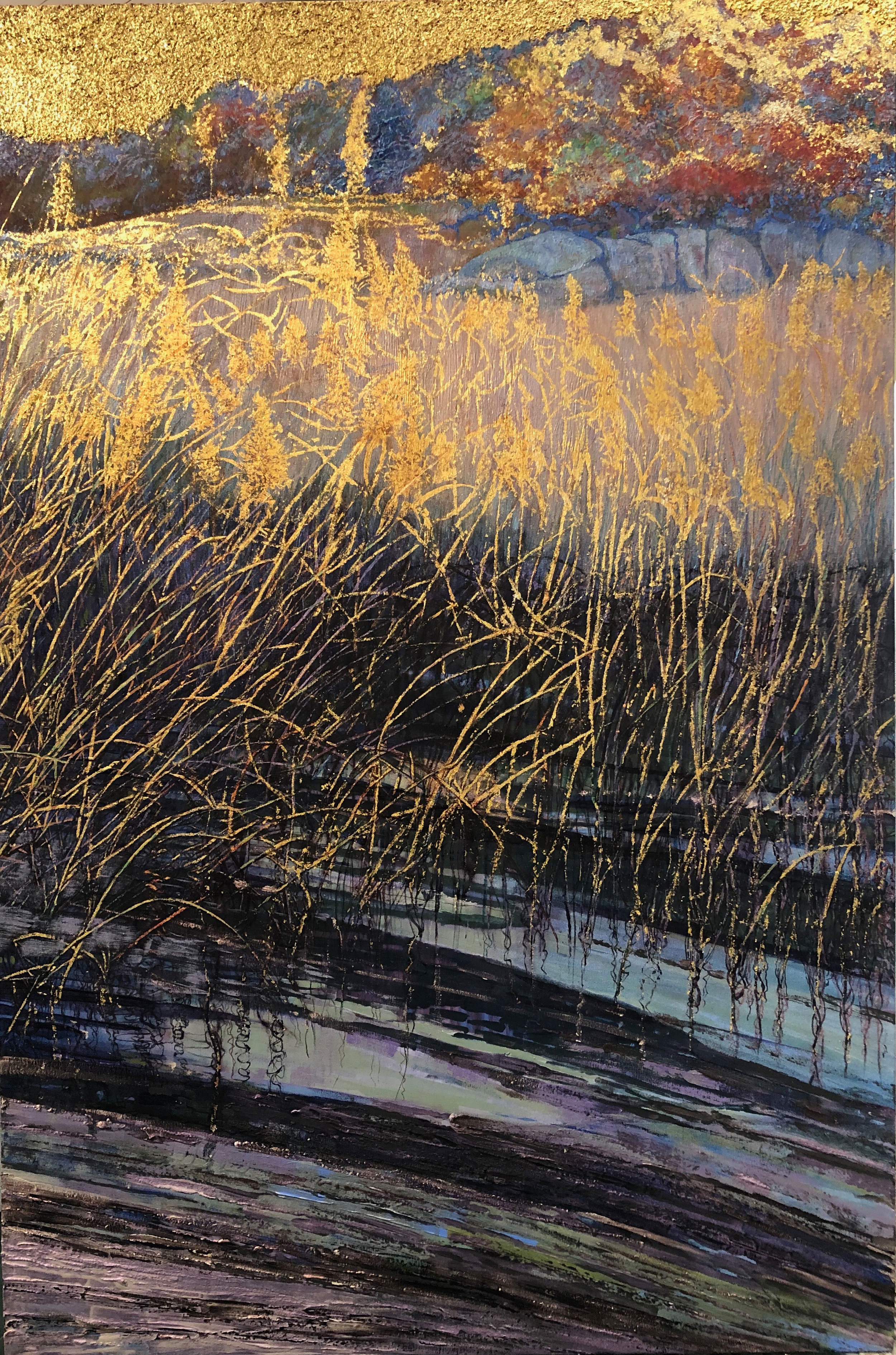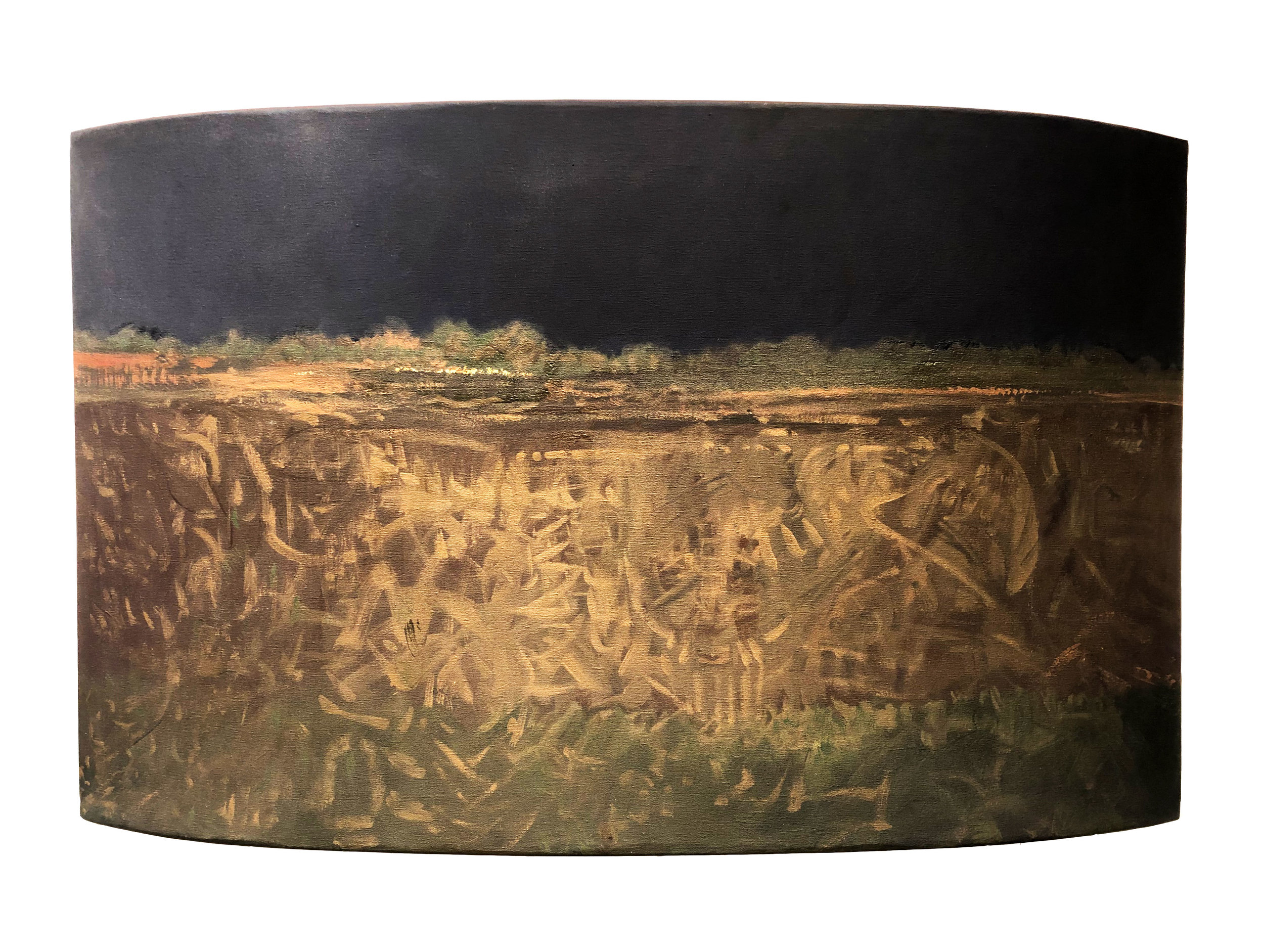2000’s - Starting in the 1970’s Garthwaite has built a large catalog of acrylic paintings that merge together color field painting and landscape with the abstract expressionist form of stained canvas. Works vary in size up to 20 feet long, ranging in subject matter both objective and abstract as seen in the different Series. What is depicted in the work is not always revealed at first glance; as you move closer, the work shifts to reveal new details buried in the multiple layers that are constructed over time. The Walsh Gallery at Fairfield University hosted a Garthwaite retrospective show, Redemptive Interludes, in 2009. “The artist encourages the viewer to put forth and complete the meaning of his profound experiences of beauty, mystery, serenity, wisdom, and compassion.”
1990’s - The concept that unites all of these works is not the subject or the process; it is something that we cannot see at all. Garthwaite draws upon ancient traditions of working on the front and back of every canvas, often creating two complete works that are represented by a single surface.
Garthwaite also transforms the different spiritual themes of the land-water connections with his use of gold leaf and with the many layers of color and texture in his landscape paintings. And yet within the beauty there remain elements of light and darkness with spirit images. During this period Garthwaite developed numerous large and smaller scale works shown in galleries across the US, in Canada, and in France.
1980’s - Gradually the drawing and painting moved full circle back to a stronger realistic landscape image while maintaining a mix of abstraction within dimensions of light and curved shapes. The Ojibway Prairie Series was a traveling exhibition to five museums sponsored by the London Regional Art Gallery, with assistance from the Canada Council and the Ontario Arts Council. In this series and in future works we are invited to move in and through time to meet the earth. As viewers we move into the landscape and we move with the inherent light in the work.
1970’s - During the 1970’s after 10 years of teaching and experimenting with color-tonal craft, brushstrokes and various formats and material, the creative processes began to take shape with new surface qualities and new methods for staining canvases on a large scale. This innovative directive drew conceptually from his family’s experiences as homesteaders in the 1930’s when Garthwaite’s father homesteaded in Saskatchewan learning from and trading with the Cree Indians. Imbued with these stories Garthwaite developed a painting technique emulating the surfaces of leather skins and tanned elk and moose hides that were part of the family history.
1960’s - Starting this decade, Garthwaite studied sculpture under Ivan Mestrovic and completed his MFA at Notre Dame. As experience through art history gives balance to what happened in the past, these years of study linked those boundaries and explored new direction in color, surface, and individual style. Earliest paintings were still life, figurative, and landscapes. Living in the Midwest, far from the Civil rights movement Garthwaite was drawn to its purpose and importance and sold out two shows of his Civil Rights paintings.







































